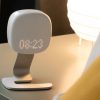Dieser Beitrag ist auch verfügbar auf: Deutsch
The “world’s most precise, contactless sleep monitor” has been standing next to my bed for a few weeks now and delivers really exciting results.
Anzeige: The manufacturer VitalThings provided me with the product for this review at my request. This had no influence on the content of my test report. The article is freely written and reflects my personal experience only.
Inhalt / Content
Runners recover mainly during sleep
I have already tested a lot of recovery tools. But the biggest contribution to my recovery and thus ultimately to my performance is certainly sleep.
I notice this especially when I haven’t gotten enough of it. After two bad nights, I can cut intensive sessions right out of the plan because the body simply wouldn’t be ready for it. I’m just not 20 anymore. 😉
For me, good training management also includes an assessment of nightly recovery. Besides the morning measurement of heart rate variability with HRV4Training (my gold standard), I have already measured and analysed my sleep with several systems: the Oura-Ring, Whoop, Polar Nightly Recharge, Garmin, …
The problem with this is that neither sleep length nor sleep phases were reliably recorded with them – which significantly reduces the value of the data. Not to mention that you have to remember to put the gadget on for sleeping as well.
I was on the verge of putting the Emfit system I tested a few years ago back into operation when I came across Somnofy during my research.
Somnofy
The Somnofy sleep monitor comes from Norway and is offered by the company VitalThings. They specialise in the contactless monitoring of vital parameters, for example in health and welfare applications or senior care homes. The Somnofy monitor is also used for this purpose.
First Impression
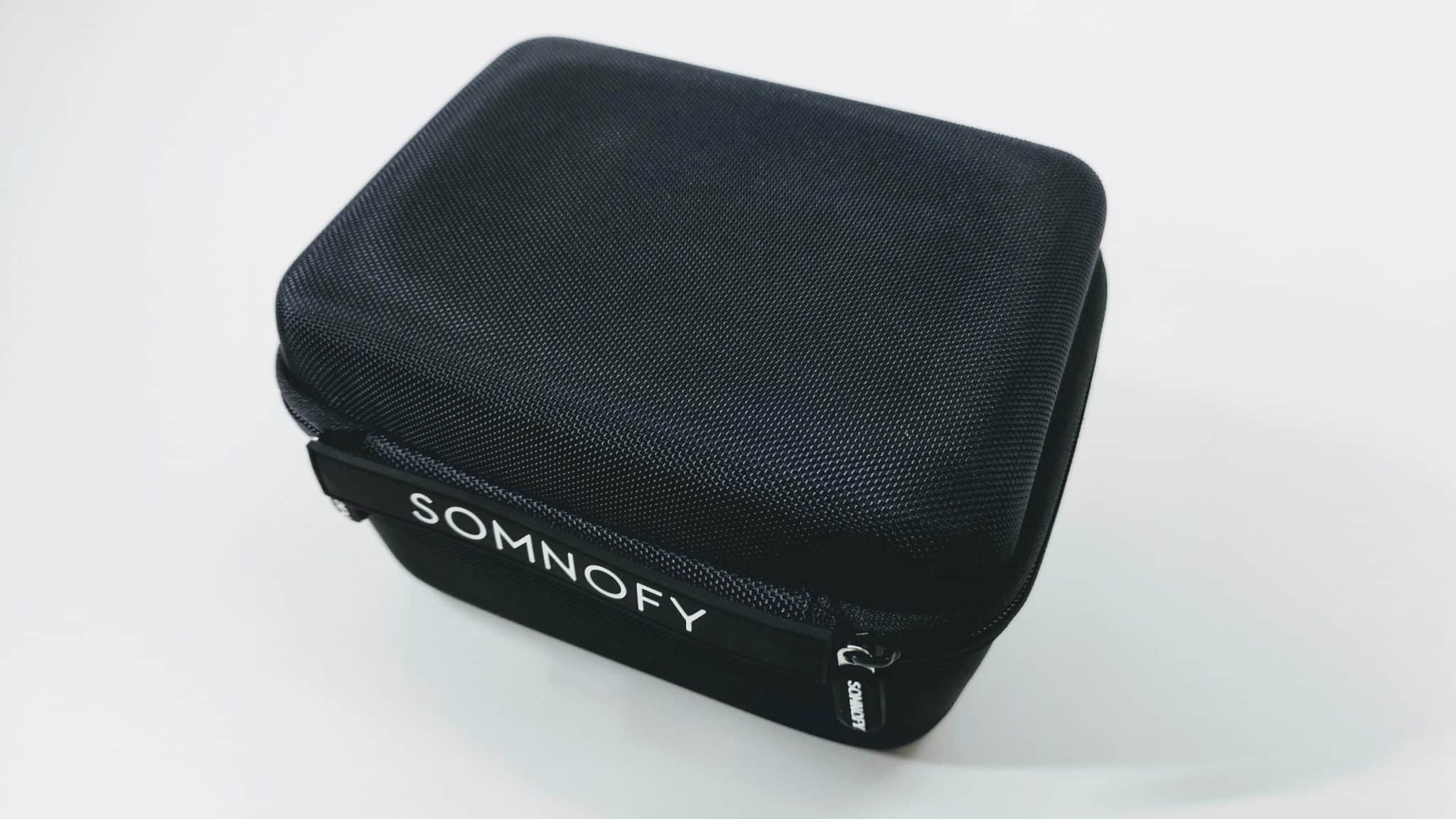

The device comes in a sturdy and practical carrying case that also contains all the accessories. So you can also take the sleep monitor with you when you travel.

The scope of delivery is reasonable, because it doesn’t take much to get the device up and running. Power is supplied via USB-C. Cable and power supply unit are included – but of course you can also use your own equipment.


The device itself is about the size of a palm and comes with a removable stand. You can also convert it so that the bracket points backwards or use Somnofy without it.

The Somnofy is then placed near the bed and should be aligned approximately to the chest. A shelf directly next to the bed is ideal for this.
Setup
The Somnofy sleep monitor transmits its measurements to a central platform and must be connected to the internet via WLAN. This is done with the associated app, which of course also displays the results later.
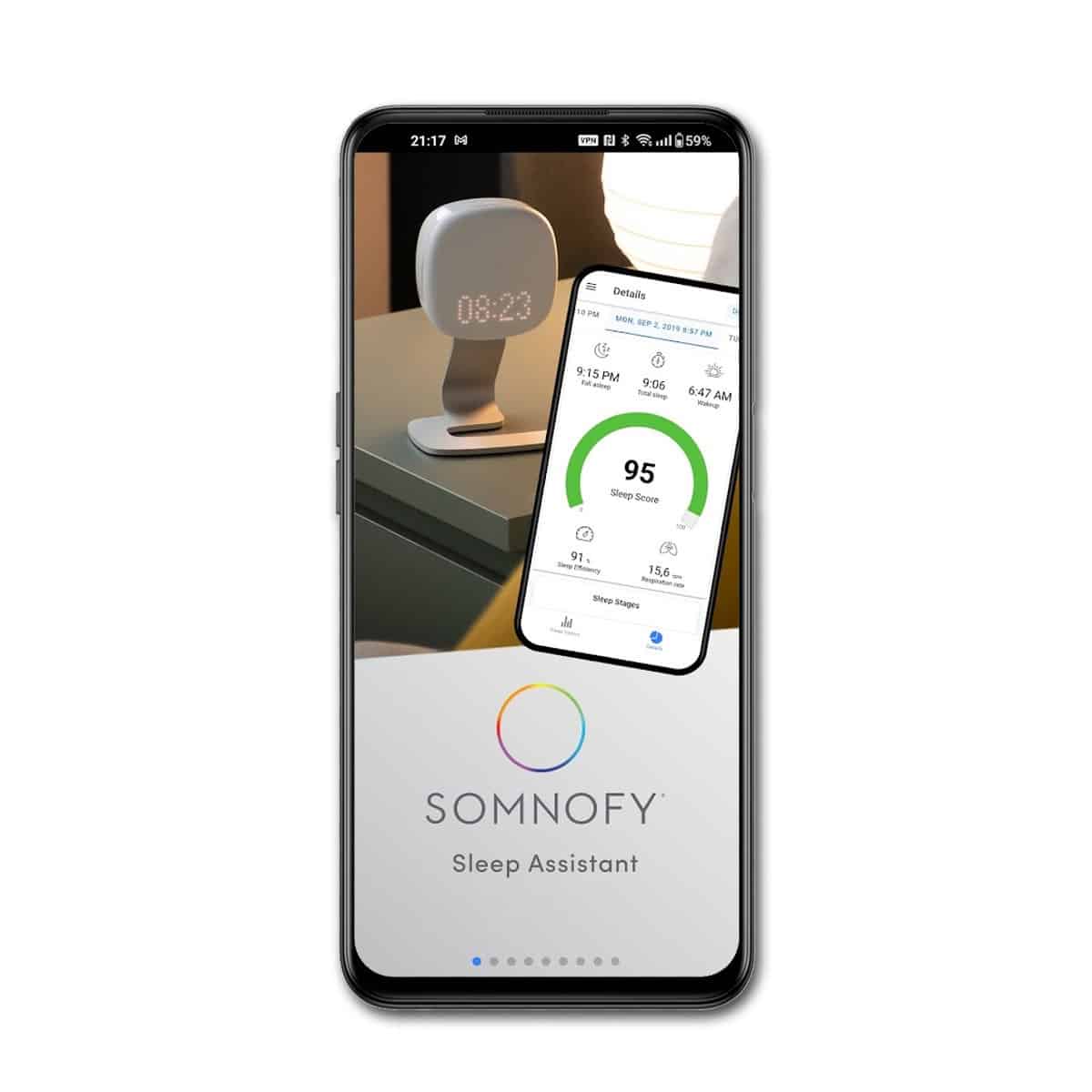
You create an account there and connect Somnofy to the WLAN. Then you have to leave the monitor alone in the room for a moment so that it can scan its surroundings. After 1-2 minutes, the sleep monitor is ready for use.

Functionality and collected data
The Somnofy sleep monitor works with electromagnetic radio waves in the radio frequency range – also known as radar. This apparently enables very, very precise distance measurement, from which data such as the presence of people, sleep incl. sleep phases or breathing rate are collected with the help of sophisticated technology.
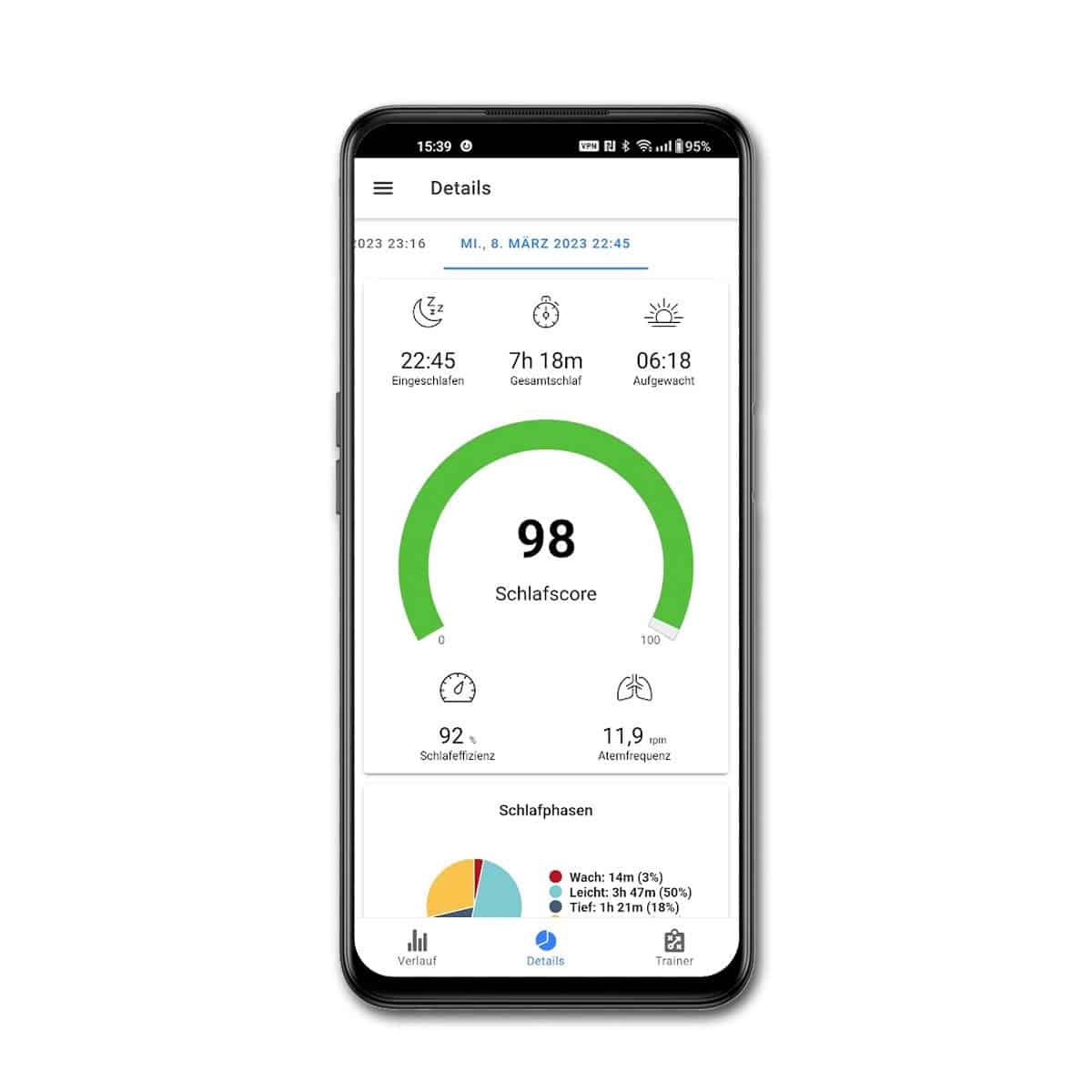
In the morning report of the app, a sleep score is shown, which evaluates the general quality of sleep on a scale from 0 to 100, based on sleep duration, sleep phases, etc.
Sleep efficiency is calculated from the ratio of actual sleeping time and time spent lying in bed and should be between 85 and 90%.
The most exciting value for me is the respiratory rate. This vital parameter gives valuable information about the state of the autonomic nervous system, i.e. the state of recovery of the body – more about this later.

The details reveal other interesting information: the Somnofy also records the temperature, humidity and air quality. Just like the air pressure, the brightness in the room and the volume.
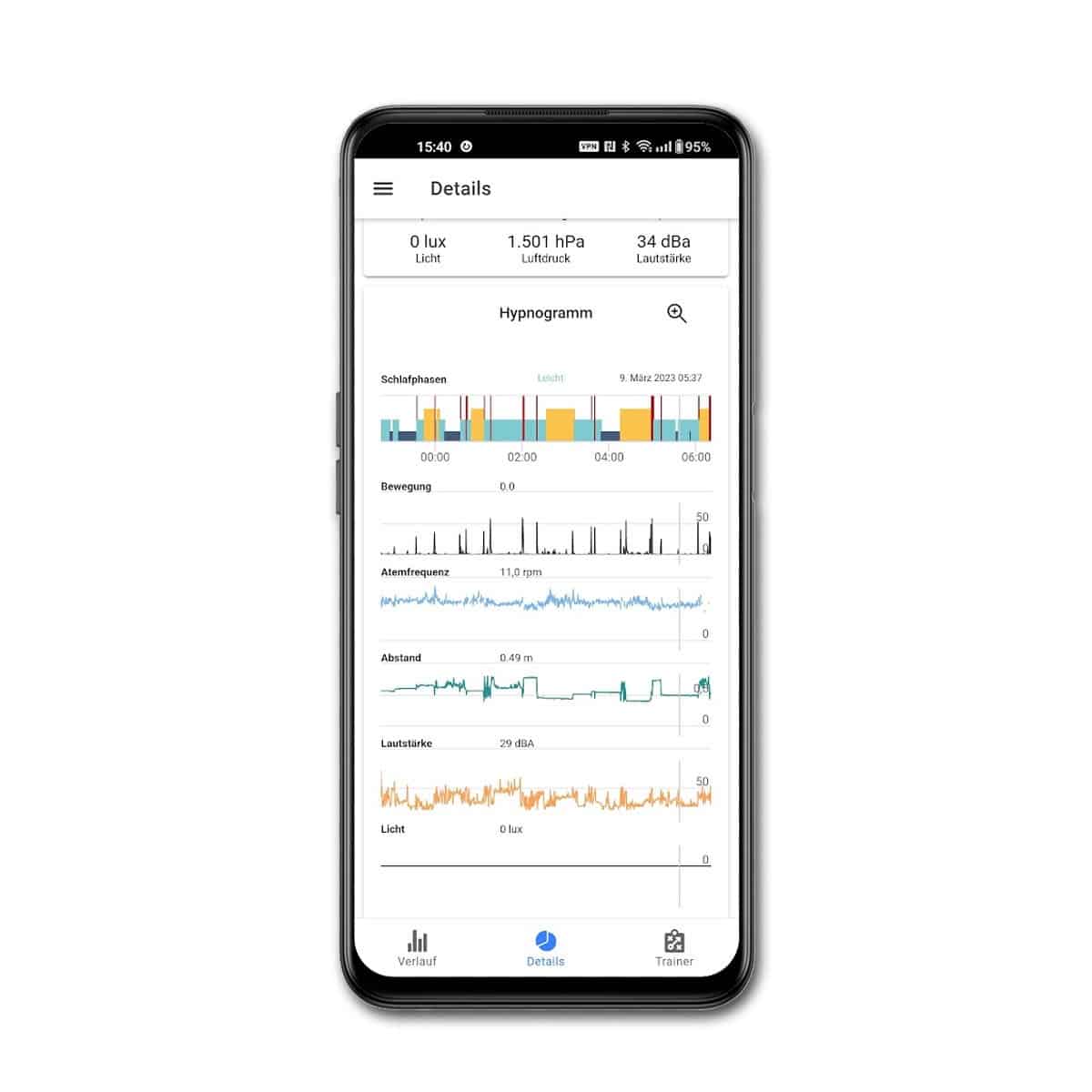
The hypnogram also provides all this in graphic form. By the way, the accuracy of the recognition of the sleep phases has been scientifically examined and certifies the system a high accuracy in comparison with professional measurements in the sleep laboratory. Another study also certifies the same quality of data for the breathing rate (further studies are linked here).
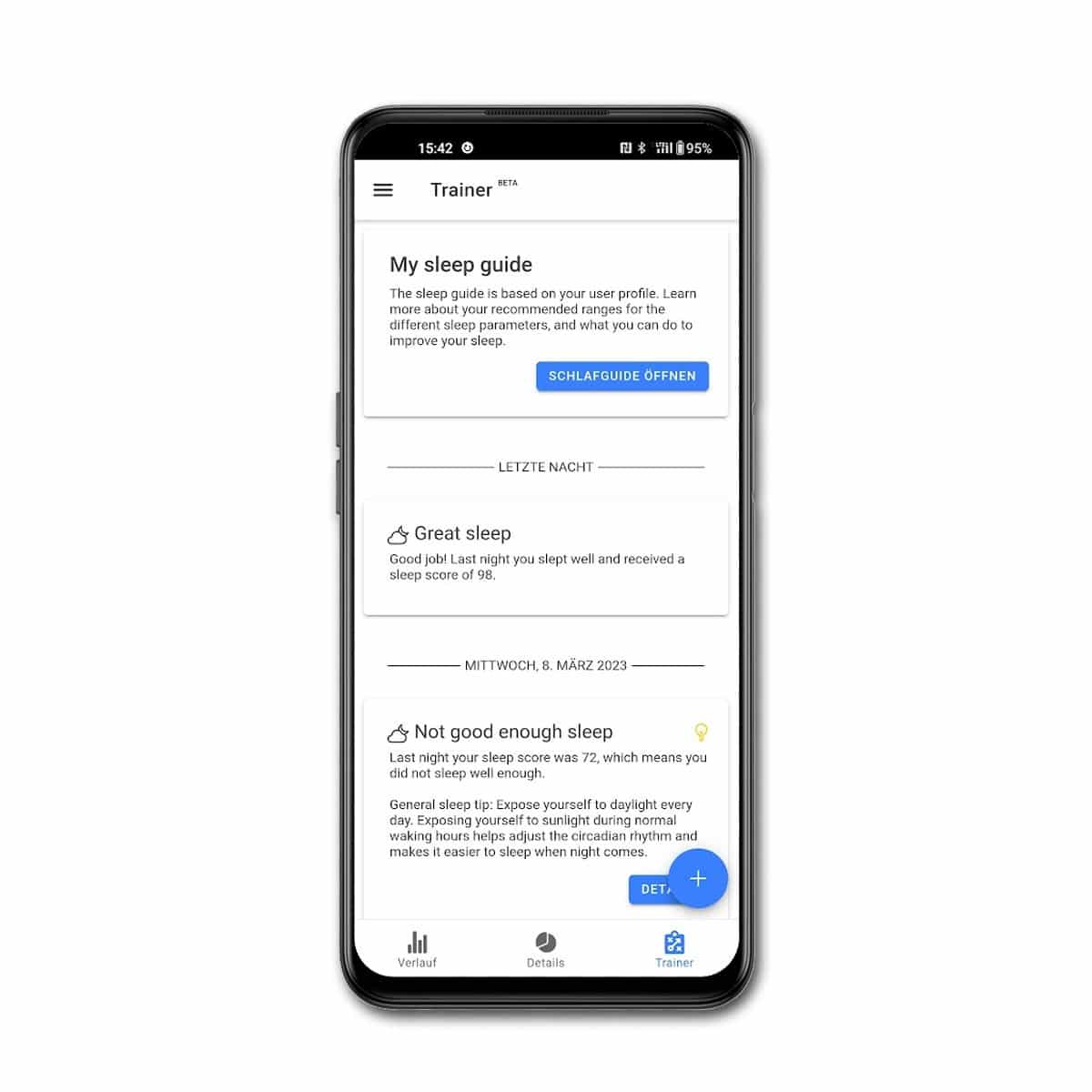
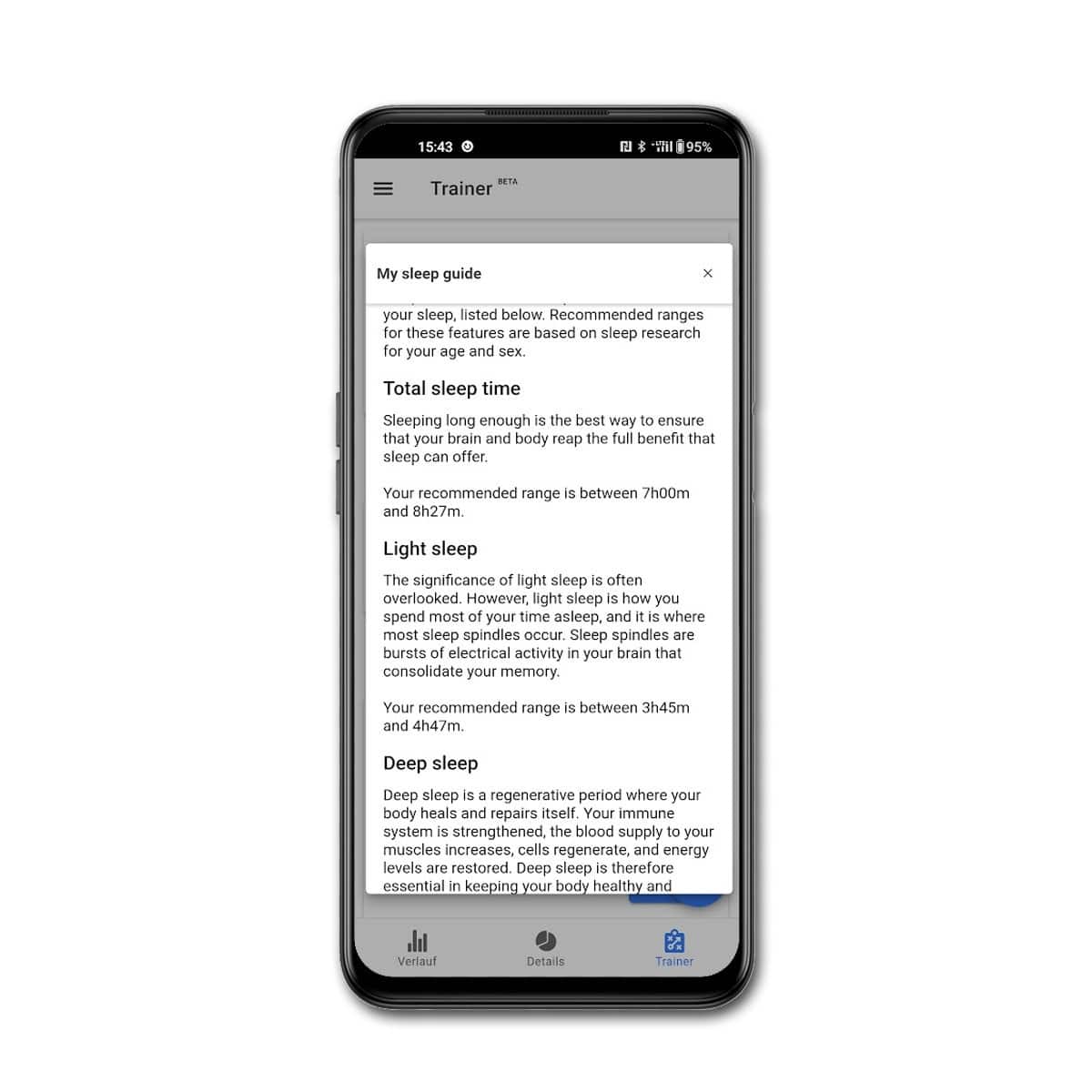
In addition, the app offers a sleep guide, which provides tips on optimising sleep – always based on the user’s own data and the recommendations generated from it.
Practical experience
The first question I asked myself when starting up the device was: How can I make sure that Somnofy only measures my sleep and not that of my wife? But that was quickly clarified, because you can limit the detection range by entering the maximum distance to the device (to the middle of the double bed, for example). And this works absolutely reliably: if I go to the toilet at night, the absence is clearly recorded and does not suddenly show the data from the neighbouring bed.

Then I found the connection between “distance” and “volume” absolutely fascinating. The distance makes it very easy to understand the sleeping position: far away (70-80cm) means I slept on my right side. At a distance of about 50cm I was probably lying on my back, while at only 30cm to the device I was lying on my left side.
Of course, snoring can be recognised by long, high volume spikes – usually associated with the supine position. The spikes in the side position are probably not mine… 😉 Coupled with the very comprehensible analysis of the sleep and wake phases, you really have a small sleep laboratory at home.
I also took the Somonfy sleep monitor with me on holiday, which was basically no problem: the small device is quickly packed and set up again. I left the cable and the power supply unit at home, because you have them for your mobile phone on holiday anyway. The only problem was the WLAN, because instead of a password, a confirmation dialogue in the browser was necessary at the holiday destination – which was not feasible with Somnofy. I simply turned my mobile phone into an access point – and it worked.
Respiratory rate
To be honest, the sleep analysis was only of secondary importance to me, because I was mainly interested in the respiratory rate with Somnofy. I became aware of it through a report by Jørgen Graabak, a Nordic combined athlete and gold medallist at the Olympic Games in Sochi and Beijing. In a blog article on the manufacturer’s website, he describes his use of Somnofy and in particular the conclusions he draws from the breathing rate for his training.
I also had a personal exchange with him and found out that he uses the breathing rate in roughly the same way as I use the morning HRV measurements. So it was obvious to compare the results with each other.
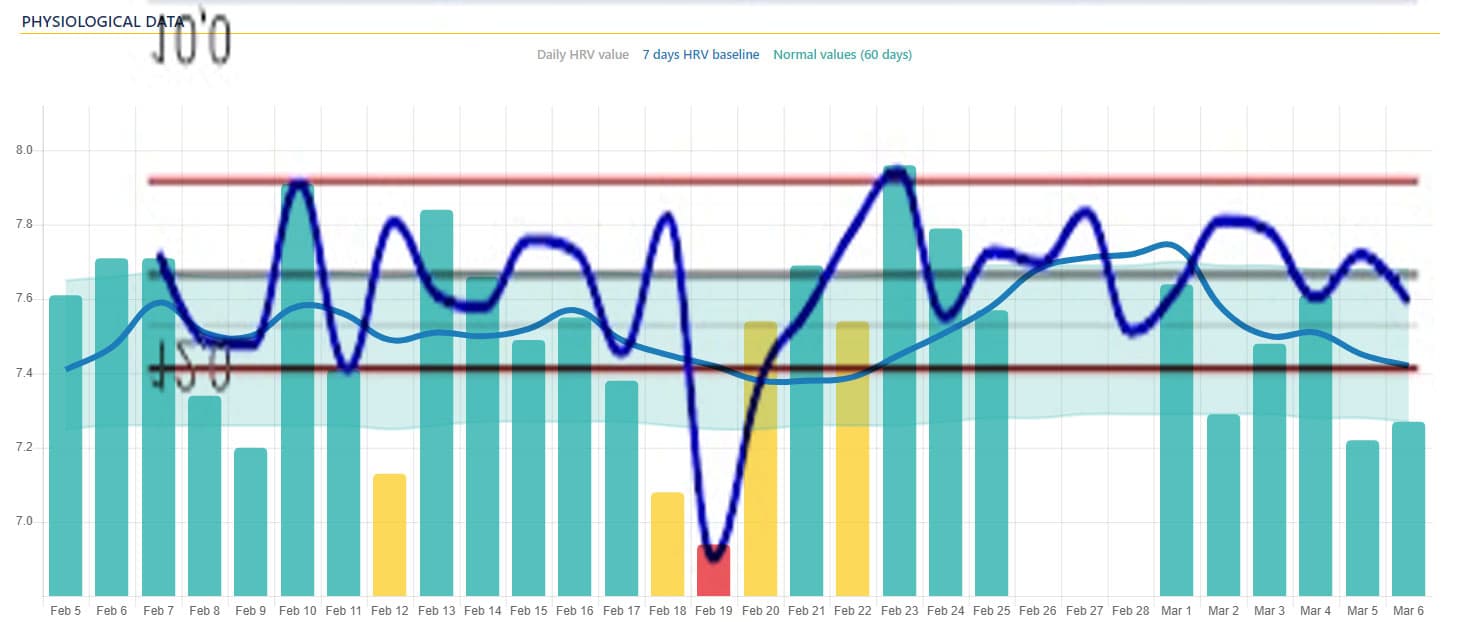
The graph shows the heart rate variability as a bar (HRV4Training) and the breathing rate (Somnofy) as a blue line. The breathing rate is inverted to make the comparison easier to read. While a high HRV stands for recovery, it is the low values for the respiratory rate.
It is easy to see that the results are almost identical. Deviations are to be expected, as there are many influencing factors to which HRV and respiratory rate can react differently. However, days with very good recovery ( 10th and 23rd of February) could be recognised in both systems just as reliably as a day with fever on 19th of February.
In general, a personal baseline is required for the assessment of the respiratory rate – just as with HRV. I find the support of the app very helpful here.


In the history, you can set the considered period and directly get an average value of the parameters. I find 2 or 4 weeks the most informative. The fold-out graphic then shows the baseline and additionally two (configurable) lines in red for the “normal range”. This makes it very easy to read off deviations and the basic development.
Overall, I would even say that the breathing rate is more in line with my actual performance readiness for the day. On the 12th of February and the 2nd of March, the HRV was so low that HRV4Training recommended that I take it slow. However, the breathing rate the night before was inconspicuous. However, I was able to do the upcoming demanding training sessions without any problems and without being punished with bad readings the next day due to poor recovery.
Conclusion
